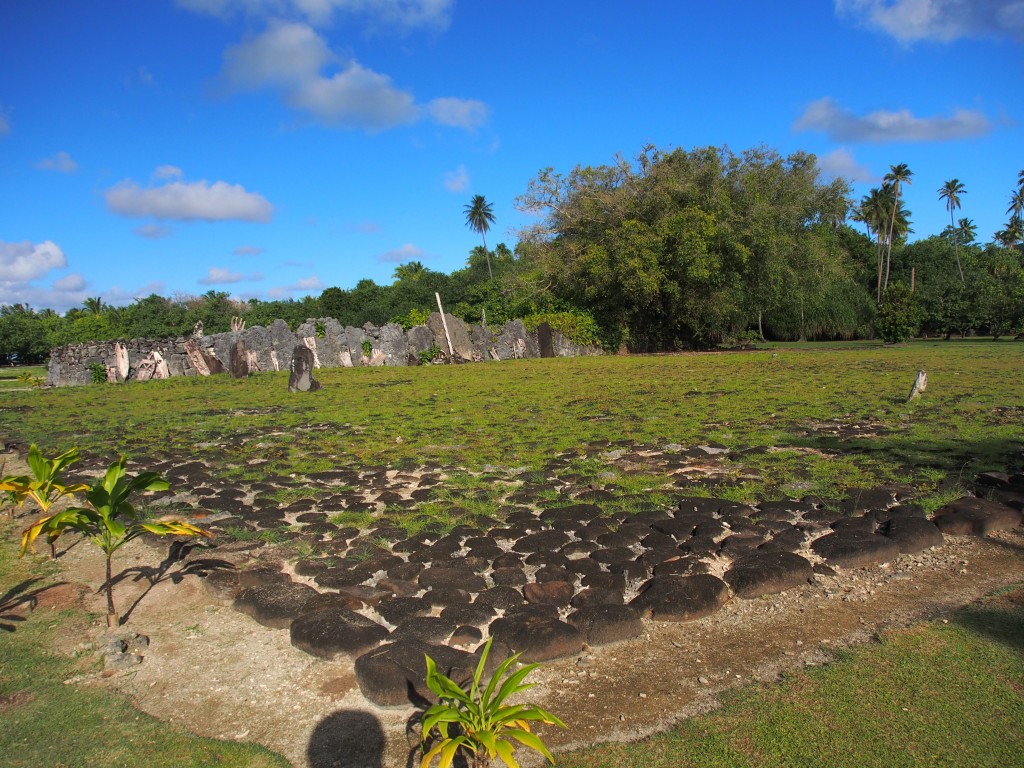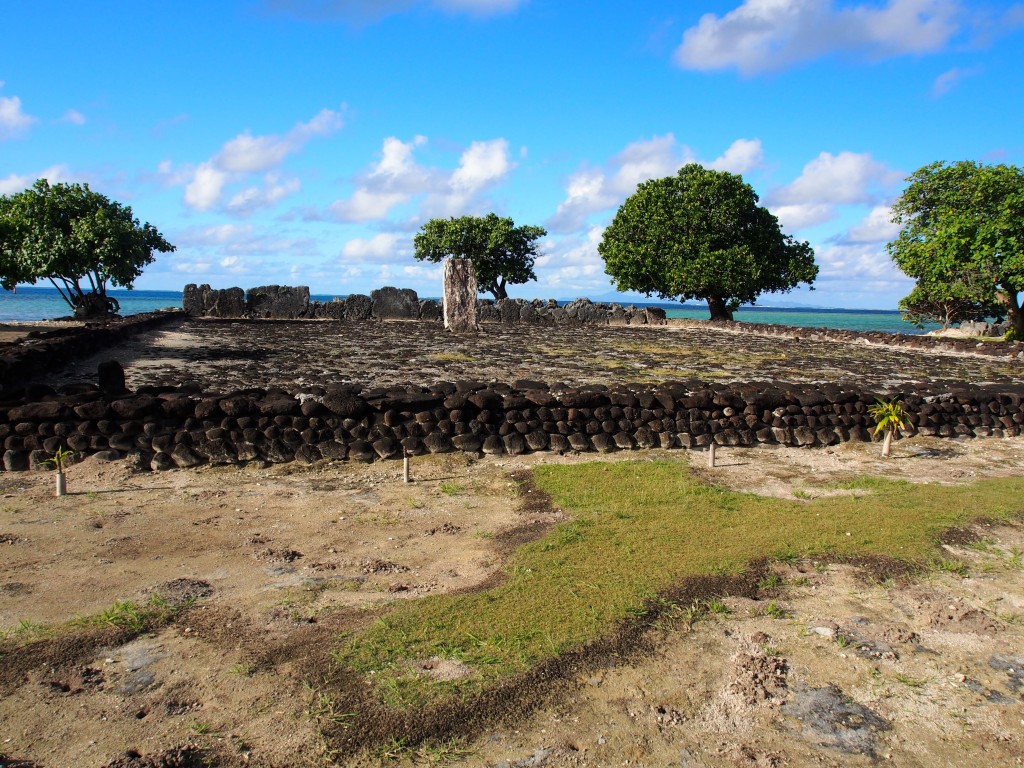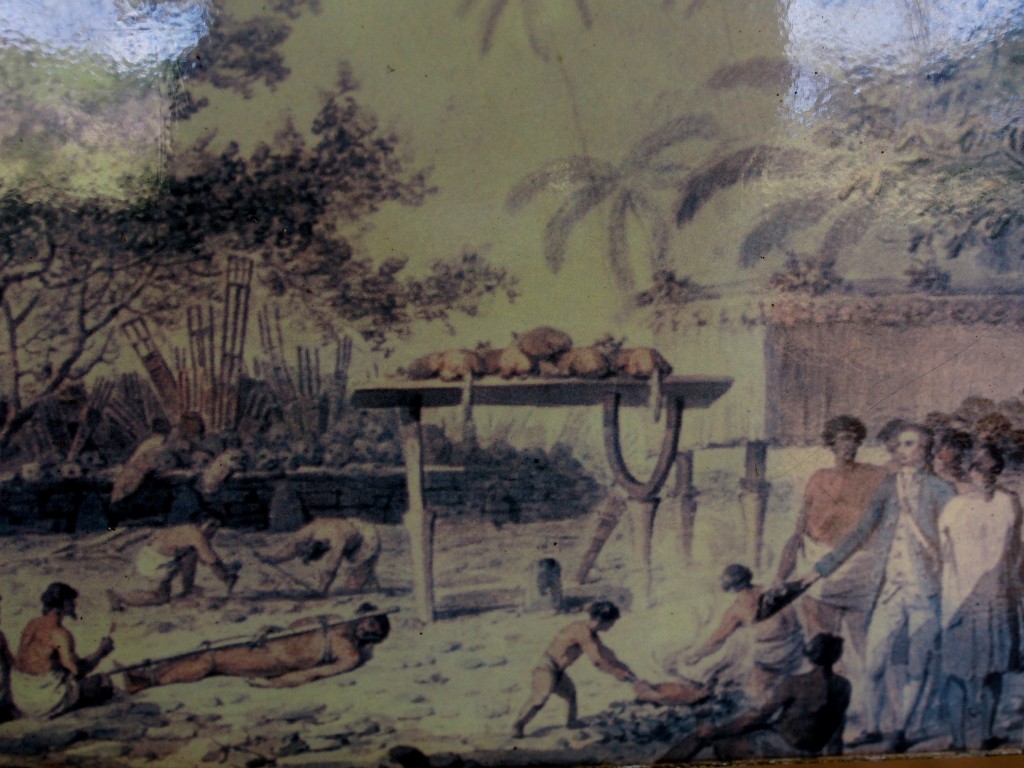Our next stop in the leeward Society Islands, Raiatea has nice inner lagoons surrounded by a barrier reef. We entered through Nao Nao pass at the southern end, another easy pass with little current. We decided to anchor near Nao Nao Island after reading about the good snorkeling there. It took a few tries to set the anchor due to the sharp drop-off of the sandy bottom—50’ to 8’ within a boat’s length, and within another boat’s length we’d be grounded. So we dropped the anchor and backed up to dig it in, then I dove in to take a look and saw that there was only 15’ of chain laying on the sandy shelf before it dropped off steeply. We put out more chain and I was able to dive down and, after many free dives, move the anchor and chain another 15’ on the shelf, then we dug it in and were satisfied. There was only 1 other boat in sight and no village within earshot, so it was a very peaceful anchorage. In the morning, we took the dinghy to the south-west side of Nao Nao Island and snorkeled along a reef for a few hours. There was considerable current so we walked along the beach and drift snorkeled back to where the dinghy was parked. The snorkeling was excellent and the coral very alive, probably the best we’ve seen in the Society Islands.
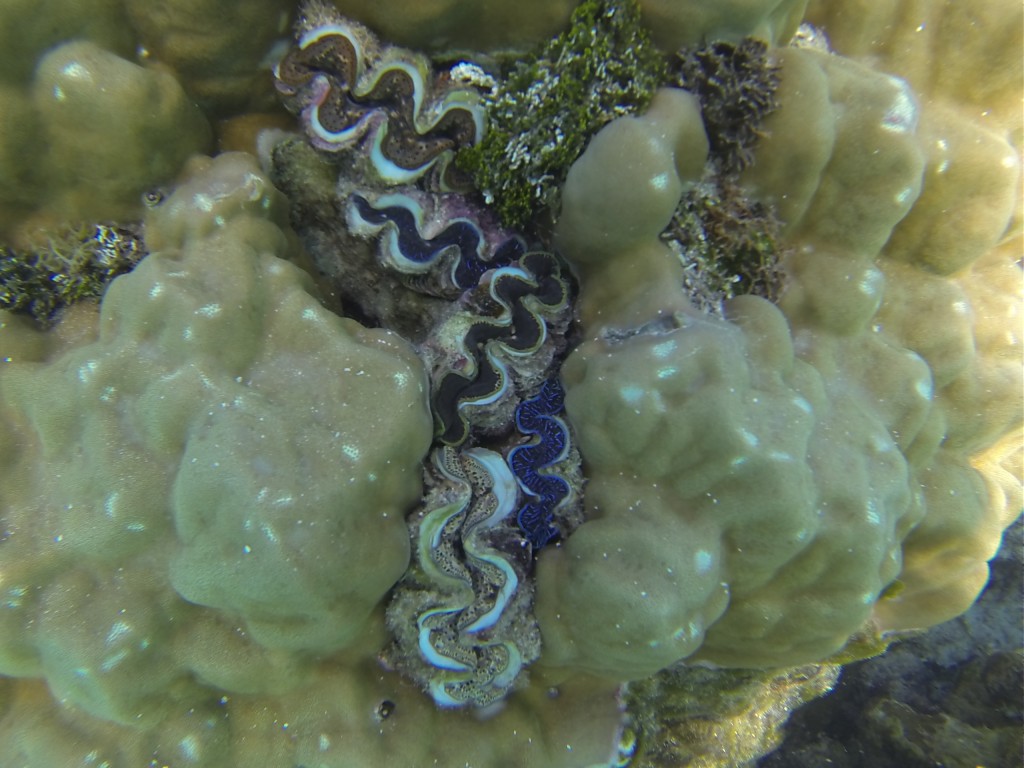
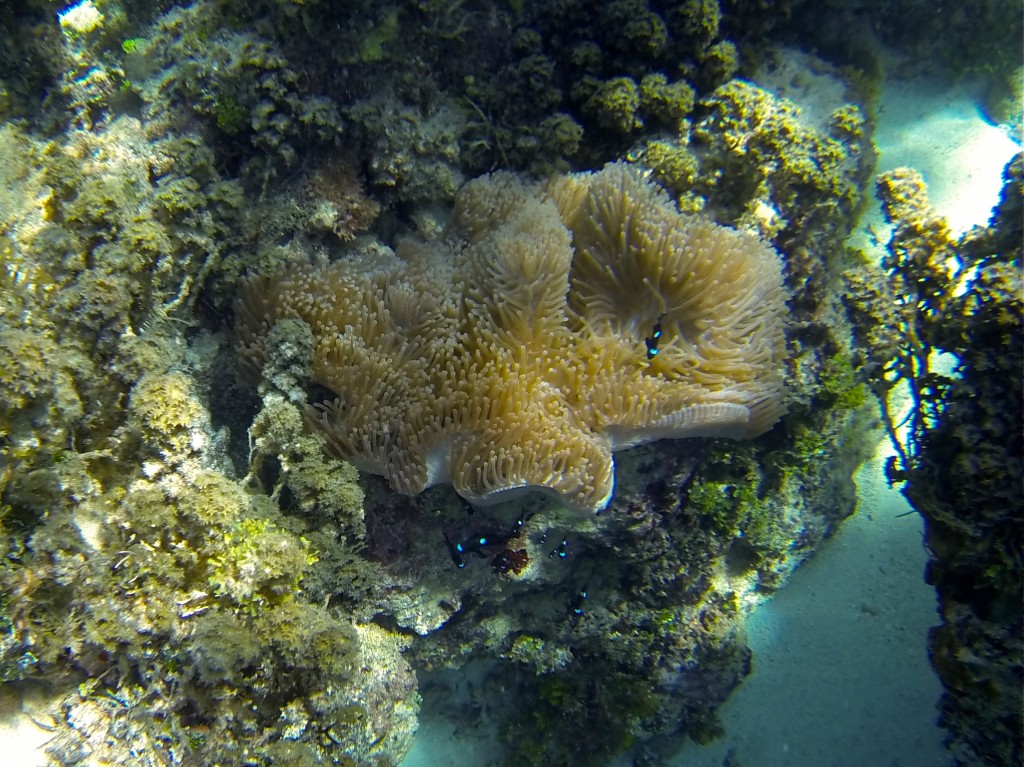
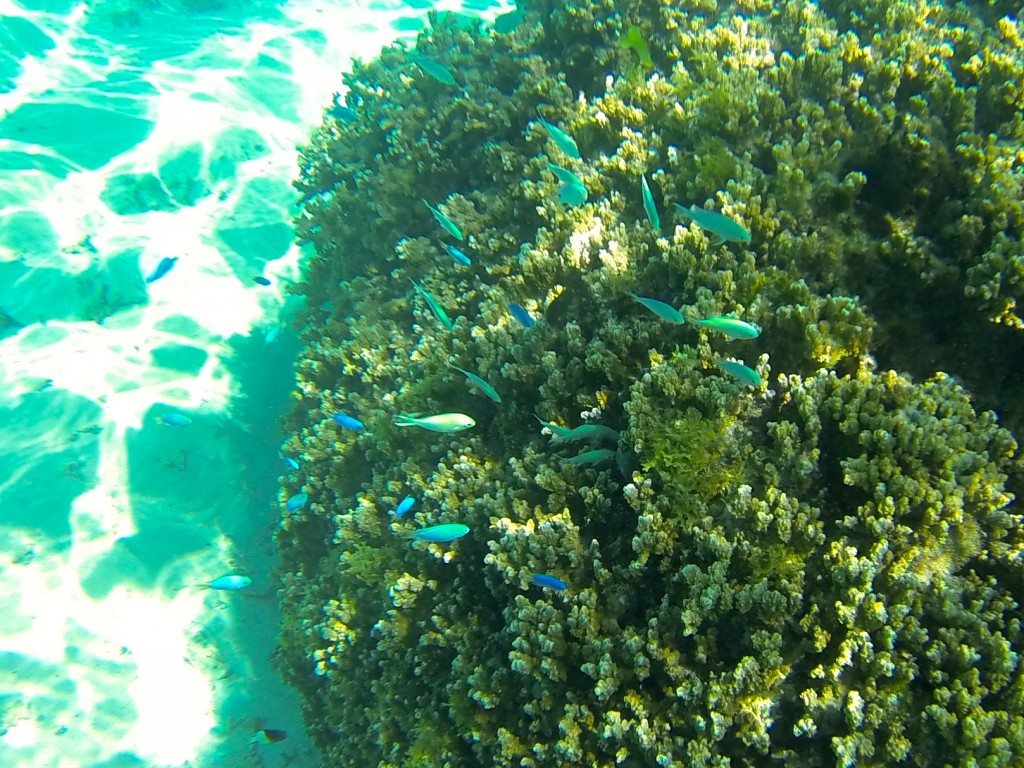
After snorkeling, we went back to the boat and up-anchored so that we could reach our next stop by mid-afternoon—an archeological sight about 10 miles away called Marae Taputapuatea. Once again, the anchoring was tricky since most of Baie Opoa is deep. We found a relatively small sandy shelf that was 20’ below the surface surrounded by deep water. It took 2 tries until we were satisfied that we had enough chain down to hold us and I snorkeled above the anchor and observed the chain zig-zagging around a few small rocks on the bottom (a plus for holding, a minus for anchor retrieval). We then took the dinghy ashore to explore the marae.
About Maraes—
Ancient Polynesians used maraes for ceremonial social and religious activities. Marae varied slightly from island to island, but were all rectangular and imposing in size. The outer wall was made of stone. Inside, a raised platform was used for human sacrifices during religious ceremonies. Tables made of wood, called fata rau, were used for whole pigs and large fish as offerings to the gods. The remains were eaten by the priests and other privileged people. When tribes battled, many maraes were destroyed by the victor. Carbon-14 dating revealed some maraes to be built during the 12th century, but the Marae Taputapuatea was constructed in the 1700’s. Capt. Cook observed ceremonial activities when he visited Raiatea in 1769. The Bora-Bora and Raiatea marae were thought to be the most important and influential within the Society Islands.
